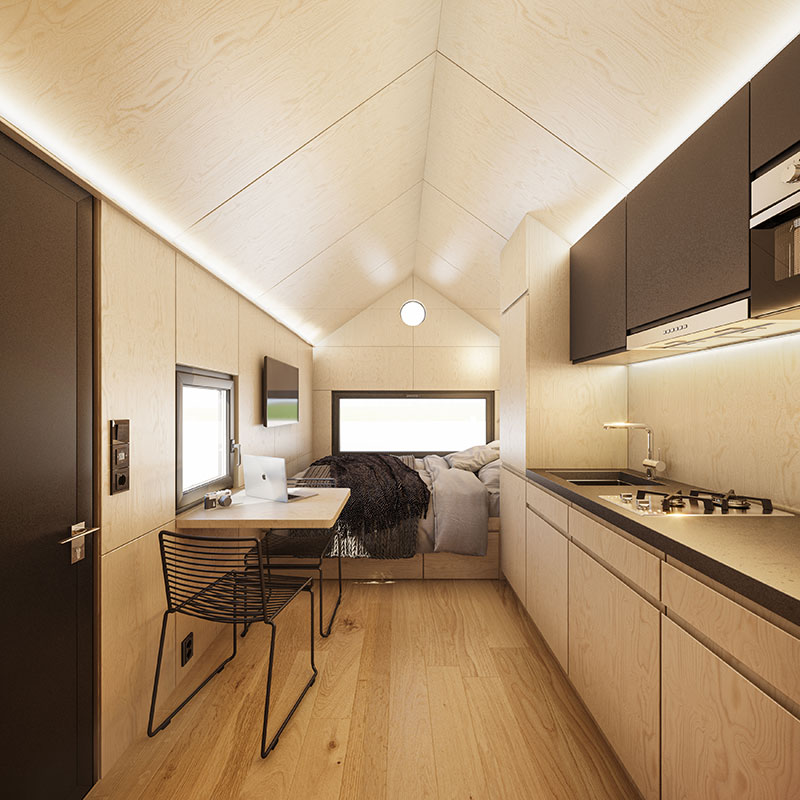Advertisement
Designing and building your home is often an enjoyable and easy task, especially when there are no limitations. However, there are situations when designing is challenging, for instance, when there’s minimal space. You’ll be working with minimal space if you’re building on a small piece of land or said home is already built and is small. Although it’ll be challenging, it doesn’t mean it isn’t doable. With the right tips at hand, you’re good to go.
That said, suppose you’re to design a downsized space. How will you go about it?
Here’s a guide to follow:
Do a Site Pre-Visit
The first step to take is to do a preliminary site visit. Here, you want to see the actual downsized space. What square footage is available? What restrictions does the space have? These are the questions to ask yourself during the visit. You want to know what you’re working with. It’ll help you design a house that’ll fit said space; it won’t be too big or too small for the space.
Eliminate Clutter
When moving to a downsized space, it’s crucial to only carry with you what’s necessary, hence the need for decluttering. It’ll make designing and arranging your new home easier. You also don’t want your space to look and feel cramped. Here, it’s best to sort out all your clothes and furniture. Be sure to remain with only what you need and use regularly. For items still in good condition, you can donate them or run a yard sale and get some money from them.
Suppose there are items you don’t use regularly but are valuable to you, and you don’t want to get rid of them. Opt for storage solutions; get a storage container big enough to hold your items without damaging them. Please visit websites such as Safestorecontainers.co.nz to see the available storage container solutions.
Create A List Of Needs
As a homeowner, there are spaces you can’t do without and those you can compromise. As you design for your downsized space, it’s important to identify these spaces.
It’d help to create a list of essential and negotiable ones. As you do this, pinpoint possible multipurpose rooms you can have.
During the design process, you’ll start by arranging the essential spaces, like the living room, bedroom, kitchen, and toilet. Should there be any square footage left, you can add the negotiable spaces based on priority.
To maximize the available space, you can have one room serve more than one purpose. For example, the living room and dining area can be one instead of having separate spaces. Doing so avails more room to add to your essential spaces.
All in all, listing all your needs ensures you put functionality above aesthetics and other aspects. Your home should first meet your needs to allow for comfort.
Work With Professionals
Designing a downsized space independently can be challenging, and there’s a high probability of making errors. You might think a given space is well-designed, only for it not to function as it should later. Therefore, be sure to involve professionals.
One of the professionals you’ll need is an architect with experience designing downsized spaces. They’ll design the space, ensuring functionality and aesthetics while adhering to building codes. It’d help to ask to see their portfolio of previous work with downsized spaces to ascertain their capabilities.
You’ll also need a contractor. They’ll actualize your design. It’s important to work with a qualified and experienced contractor. It’s the only way to ascertain there will be no errors. Errors in building a downsized space can bring about dysfunctionalities. For instance, the building can be bigger than the design, forcing you to reduce the floor area of some spaces for the building to fit on said land.
Play Around With Lighting
Lighting plays a major role in the appearance of a space. It can make your home appear cramped and small or large and spacious. There are various ways to make your downsized space appear larger.
One, consider adopting natural lighting as much as possible. You can adopt large windows with more glass than frames; glass doors, like aluminum sliding doors, will also add natural lighting. Bring in light from the roof by incorporating skylights and roof windows.
You can also play around with lighting by adopting light-colored paints on your walls, like cream and white. Once the sun’s rays hit on these surfaces, they’ll reflect the light all around your small space, illuminating it.
In general, the more lit your space is, the bigger it seems, which is what you want to achieve.
Conclusion

A downsized space doesn’t have to feel so every time you’re in it. With the right design and arrangement, you can enjoy optimum comfort without feeling cramped. The discussion above has given a guide on designing downsized spaces. Highly consider implementing this guide for your space; it’ll reduce, if not eliminate, all the worry of the design process.

